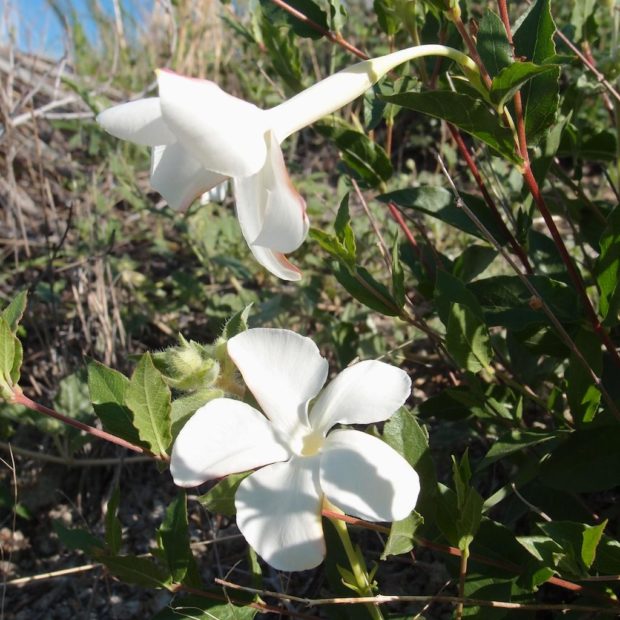There is only one species Mandevilla in Arizona, but there are over 100 species found (maybe as many as 200 spp.?) if you start going south into Mexico and Central and South America. It’s overwhelming. And there are numerous cultivars…be careful!
The old botanical name of this cool night bloomer was Macrosiphonia brachysiphon and translated to “large tube short tube,” which I thought was just a wonderful way to remember it, but that’s just me.
I wonder what critters visit this fragrant night bloomer? Bats? Hawk moths? Maybe early in the morning before the flowers close up, native bees? Well, it belongs in a night blooming pollinator garden at your casa, right? Mine too.

The photos are by the botanist Sue Carnahan and taken from SEINet. I thank her and here is a link to that marvelous site: https://swbiodiversity.org/seinet/

Who hasn’t gotten hooked by a dry devils claw pod on a walk in the borderlands. So pesky and yet so interesting looking, it’s...

I meant to talk more about the leaves of Physocarpus monogynus. They resemble the leaves of a currant or a…

It was Linnaeus that created the name Mimosa from the Greek: mimos for mime and the suffix osa for resembling. As to the plant...